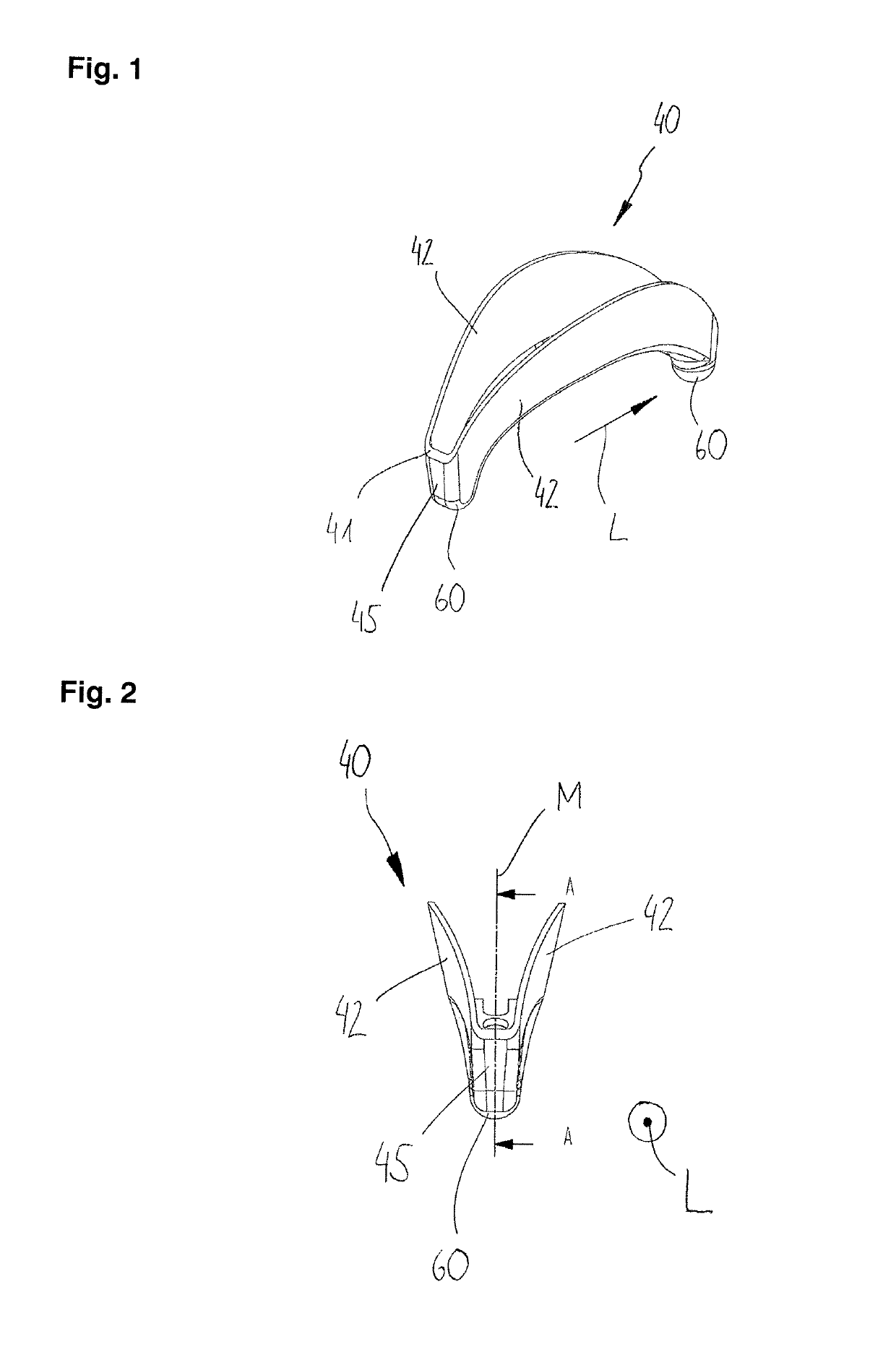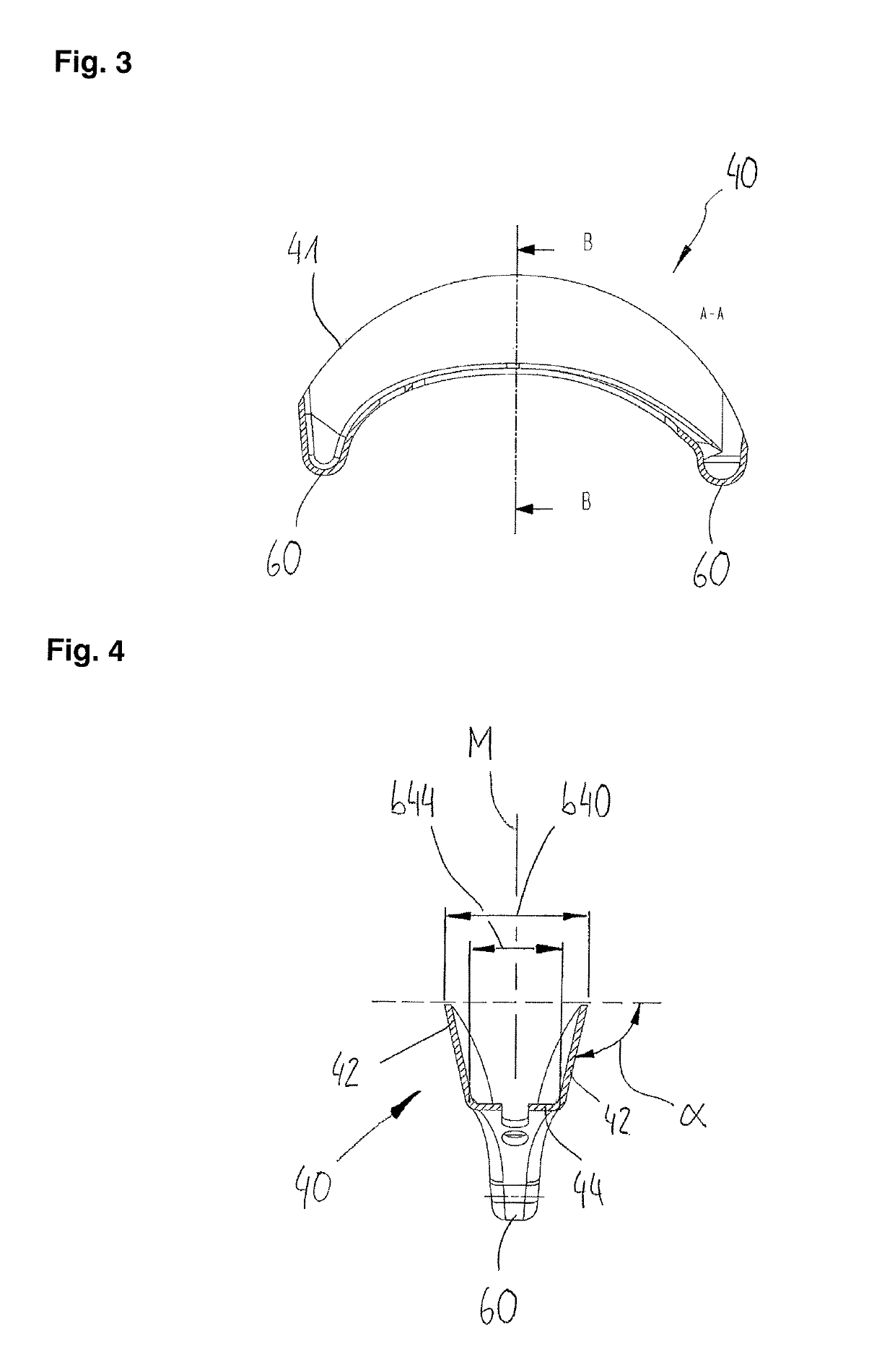Brake shoe
a technology of brake shoes and joints, applied in the direction of mechanically actuated drum brakes, mechanical apparatus, coatings, etc., can solve the problems of inaccuracy quickly arising during the joining, and achieve the effect of less outlay for coordination during the mounting
- Summary
- Abstract
- Description
- Claims
- Application Information
AI Technical Summary
Benefits of technology
Problems solved by technology
Method used
Image
Examples
Embodiment Construction
[0028]FIG. 1 shows in a perspective illustration a bridge unit 40 comprising two bridge plates 42, which are connected via transverse plates 45. The bridge unit 40 extends along a longitudinal direction L (or along a circumferential direction of the brake drum) and, at its respective ends, respectively forms functional areas 60, the (rear) one being formed spherically, in particular in the shape of a ball, the front one more likely cylindrically. It is possible to see clearly the one-piece configuration on the bridge unit 40, comprising the two bridge plates 42, the transverse plates 45 and the functional areas 60. The bridge unit 40 forms a circumferential arrangement surface 41, via which the arrangement and fixing on a brake lining, not illustrated here, is carried out, for example via a welded connection. Here, the great advantage of the bridge unit 40 becomes clear, specifically that only one component has to be “handled”. In addition, the decreasing height of the bridge plates...
PUM
| Property | Measurement | Unit |
|---|---|---|
| thickness | aaaaa | aaaaa |
| thickness | aaaaa | aaaaa |
| angle | aaaaa | aaaaa |
Abstract
Description
Claims
Application Information
 Login to View More
Login to View More - R&D
- Intellectual Property
- Life Sciences
- Materials
- Tech Scout
- Unparalleled Data Quality
- Higher Quality Content
- 60% Fewer Hallucinations
Browse by: Latest US Patents, China's latest patents, Technical Efficacy Thesaurus, Application Domain, Technology Topic, Popular Technical Reports.
© 2025 PatSnap. All rights reserved.Legal|Privacy policy|Modern Slavery Act Transparency Statement|Sitemap|About US| Contact US: help@patsnap.com



